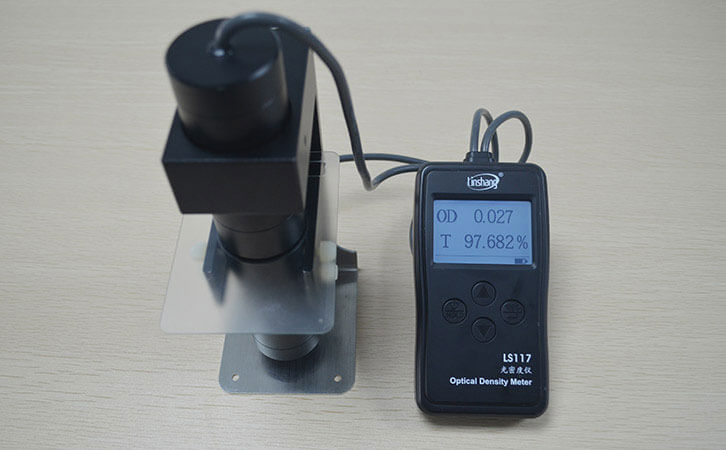Ground Glass Optical Transmission Meter
Ground glass is also called frosted glass or matte glass. The rough surface effect is formed by mechanical blasting, manual grinding or some chemical treatment. Light passes through the ground glass causes diffuse transmission, and the light is scattered in all directions. Therefore, the transmittance of the ground glass cannot be measured using our regular transmission principle, but a diffuse transmission principle is required. Below we will detail the principle of detection of the optical transmission meter with diffuse transmission principle.
Common transparent glass surface is even and flat, so when the light is perpendicularly projected onto the surface, it will pass through the original path from the other side of the glass, so that all the transmitted light can be received using a conventional light transmittance meter. Under the same illumination, the unevenness surface of the ground glass causes a large amount of light to spread in different directions. The light transmittance meter using the regular transmission principle only receives a part of the transmitted light, and the measured transmittance data is small.
The diffuse transmission principle of the optical transmission meter is equipped with a piece of opal glass (simulating the effect of integrating the sphere), and receives the most light reflected through the mutual reflection between the opal glass and the ground glass. Therefore the transmittance of ground glass requires an instrument that uses the diffuse transmission principle.
At present, in the market there are mainly the LS117 light transmittance meter of Linshang Technology and the 341C of X-Rite adopt this principle. Next we will mainly explain how to use the optical transmission meter LS117 test the transmittance of ground glass.
The ground glass has a double-sided matte and a single-sided matte. For the transmittance detection of single-sided ground glass, we recommend that the matte side be facing the receiving surface, so that the test data will be more accurate.
Next, we will start the test. First, turn on the instrument, after a short period of warm-up, the instrument will display the initial data, that is, the 100.00% transmittance without the object being blocked (in addition, the optical density value of 0.000 is also displayed). The upper part of the two sleeves is the receiver and the bottom is the light source, so we place the ground glass with the matte side up and the smooth side down between the two sleeves and make sure the sleeve is close to the sides of the ground glass. After the data is stabilized, the transmittance of the ground glass can be read.
Light Transmittance Detection of Ground Glass
There are many translucent materials like ground glass. To test this type of material, a diffuse transmission principle is required. If it is not possible to confirm whether it is a translucent material, we can observe the palm of the hand through the material. If we can clearly observe the edge of the palm through the material, the material is transparent; and the palm we can observe through the translucent material such as ground glass is definitely not visible. This is one of the ways we distinguish the transparent and translucent materials.
The above is the principle of the optical transmission meter for ground glass and how to use this instrument. If you have more questions, please feel free to contact us through the contact information on our website.
- Lampshade Transmission Densitometer Measure the Transmittance of PC Lampshade
- About the custom range of Linshang LS117 densitometer
- Transmittance Measurement of Plastic PC
- Vacuum Coating Thickness Measuring System
- Fourth Upgrade Vacuum Coating Online Thickness Measuring System
- Lampshade Transmittance Meter Measure the Transmittance of PC Lampshade
